Transdisciplinary Design /
The Design Village’s undergraduate programme in Transdisciplinary Design prepares students to create impact through design, offering a journey across disciplines, mentoring by leading designers, and curated immersions, exposure, and experiential learning worldwide. Students follow an award-winning, globally acknowledged curriculum and a pedagogy inspired by leading design institutes in America, Asia, and Europe. Graduates of the programme find their place in entrepreneurship, sustainability, and technology.
B.Des (Hons.)
More about 4-year
undergraduate programme
M.Des
More about 2-year
postgraduate programme


(HIGHLIGHTS)
Choose
Transdisciplinary
Design at TDV
Design for Transformation
Transdisciplinary Design programme at The Design Village encompasses transformational design, preparing designers who do not limit themselves to a singular design domain, but work as independent, non-silo designers who can design with any and every medium imaginable. Students are trained in transdisciplinary processes that seek to create desirable and sustainable changes in behavior and form, in individuals, systems and organizations. It is a multi-stage, iterative journey of applying design principles to complex systems for impact.
Industry-centric Ecosystem
With an intent to provide exposure to everything our designers shall work with: the Transdisciplinary programme provides an unmatched exposure of knowledge and industry. Students take up an industry immersions in Italy, experiencing Culture, Impact, Innovation and Sustainability. In parallel, they co-learn with their peer learners, studying at top institutions such as Politecnico di Milano, TU Delft etc. through two certified workshops held in various parts of India.
Placements and Independence
TDV’s Transdisciplinary Design programme offers students the opportunity to take up courses from any specialization, based on their interest, while being closely guided by an industry expert, guiding them in their decision making.TDV has strong ties with established transdisciplinary practices, governmental bodies and conglomerates, enabling students to get their foot inside some of the most inaccessible industry doors across the world, including Deloitte, Reliance, Government of Madhya Pradesh.
(PATHWAYS)
FORGE a PATH that
reflects you
Discover the diverse paths your design education can lead to. Whether you're driven by creativity, strategy, storytelling, or systems, this is where your journey begins to take shape.

Social Design
Design for people, communities, and change. Social designers create meaningful interventions that address societal challenges and reimagine how we live together.

Service & System Design
Craft seamless experiences and resilient frameworks. Service and system designers connect people, processes, and environments to build solutions that work at scale.
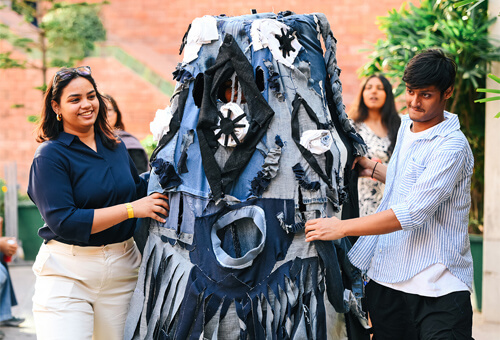
Sustainable Design
Create with responsibility and foresight. Sustainable designers shape practices and products that honour resources, reduce impact, and imagine regenerative futures.
(PLACEMENTS)
Work with Changemakers
Graduates of Transdisciplinary Design Programme at TDV work in Impact, Technology, Design and Business, Creative Leadership, Strategy, Sustainability, and Governance.


Vanshika Mehta
Deloitte, Gurugram
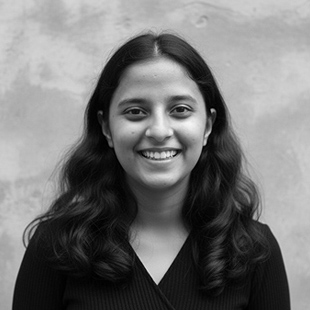

Dishita Pragya
Government of Madhya Pradesh, Bhopal
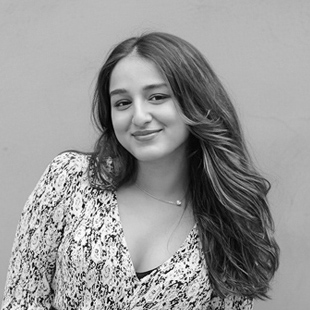

Shruti Singh
Reliance Brands Ltd, Delhi


Saansh Arora
Co-founder
Centre for Social Design, Delhi


Radhika Thapar
Tata Elxsi, Bangalore
(AWARDS)
Get Globally
Recognized


Vedangi Rane, Mumbai, 2026, Divyansh Jain, 2024, Rewari - Haryana, Prakriti, Gorakhpur, 2024, Raghav Modi, Jaipur, 2024
The project aimed to create eco-friendly solutions using leftover marble remnants. It exemplified the Biodesign Challenge's core principle of tackling large-scale issues on a local scale.

(Real-world Projects )
Industry projects are a part of TDV classroom, giving students an in-depth, hands-on experience of how organizations approach actual design problems, manage clients, and deliver final products in the market.


Google-on-Ground, 2022, Google APAC
Propose interventions to drive positive systemic changes in the APAC region and not America first.

Tourism in Meghalaya, 2020, Meghalaya Infrastructure Development Finance Corporation (MIDFC)
Systemic interventions for sustainable tourism growth in the state of Meghalaya

People of Araku, 2022, Araku Coffee
Strategic interventions to deepen stakeholder relationships

Visualizing Innovation through Uncertainty, 2023, Wharton India Economic Forum
Visual branding and identity for Wharton India’s 27th Annual Economic Forum

Parivartan, 2019, Takshila Education Society
Extending the work and ideology of Parivartan and Takshila through social interventions, and creating educational and systemic moments of interaction.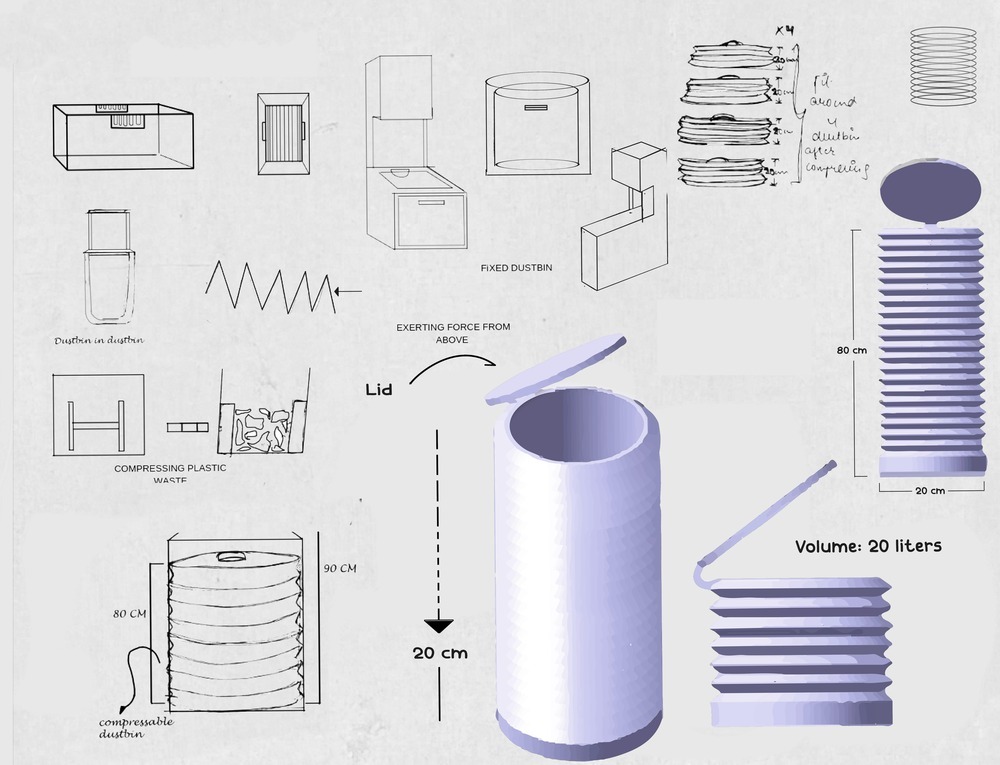
(STUDENT WORK)
Innovate in
the Classroom
Transdisciplinary Design students at The Design Village take up classroom projects that have the potential to impact the society, transform organizations, and creatively change the world.

The Beautiful Game
Framework that re-imagines rules of an ever-evolving and an ever-loved sport.
Abhishek Das
2022

Positive Breastfeeding
Smart textiles that mitigate pain associated with breastfeeding
Akshita Maheshwari
2024

Selving
Call for action reflecting human commoditization as a means of income caused by the loss of jobs due to automation
Pradeep Singh
2021

Ethical frameworks
Ethical frameworks in persuasive design
Karan Pal Singh
2021
(MASTERS)
Learn from
Industry Masters

Anna Noyons
Professor of Practice
Founder, ink Social Design

Jeroen van Erp
Innovation Strategist, Fabrique
Session by Jeroen van Erp, 2024
(FACILITATORS)
PROGRAMME FACULTY

Mudita Pasari
Programme Head

Dr. Thomas Mical
Faculty
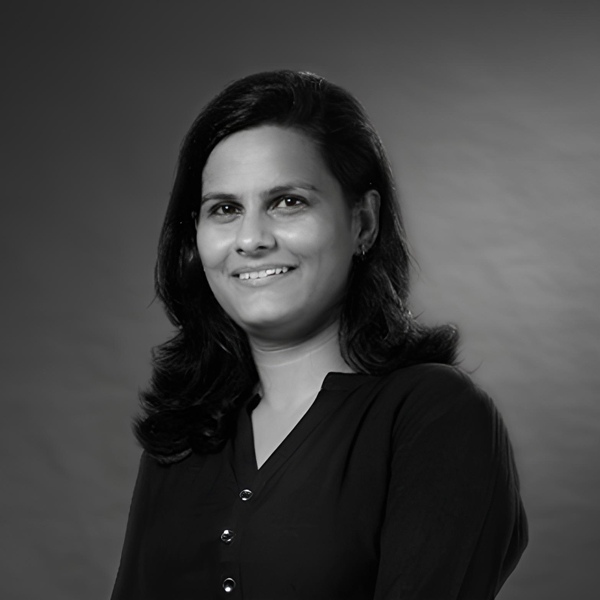
Isha Talsania
Faculty
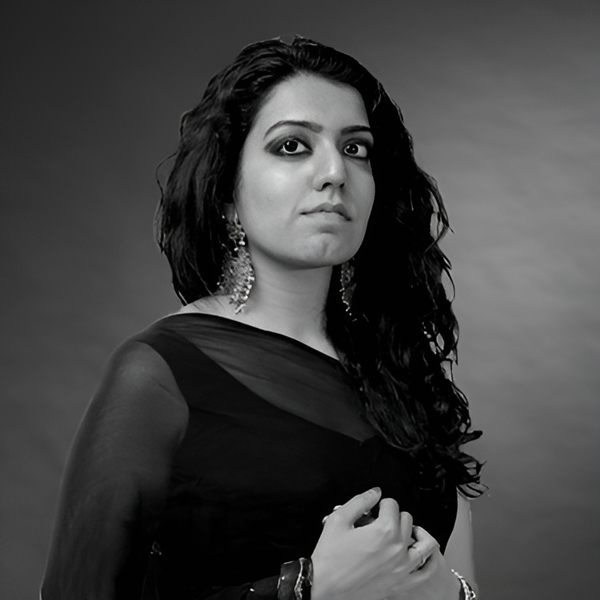
Meenakshi Thirukode
Faculty
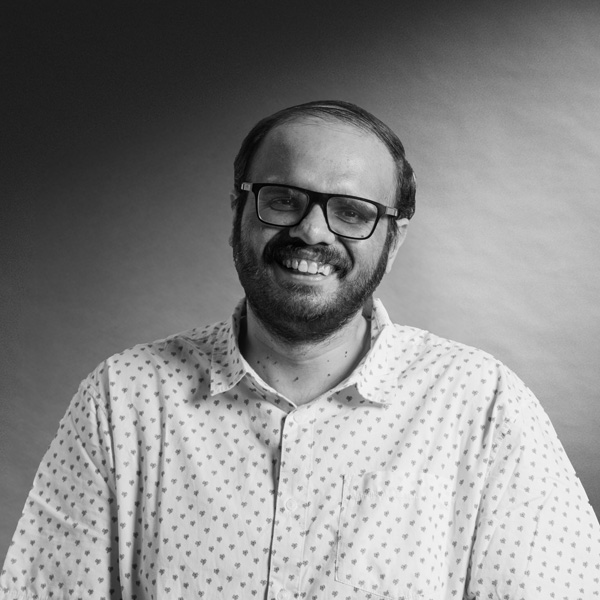
Deepit Magee
Faculty
Editor, NDTV
PG Diploma | Asian College of Journalism | 2019

Varun Manocha
Faculty
(FAQs)
FREQUENTLY
ASKED
QUESTIONS
About Transdisciplinary Design
1) What is Transdisciplinary Design?
1)Transdisciplinary Design is an approach that transcends traditional boundaries between disciplines, integrating knowledge, methods, and perspectives from various fields to address complex challenges in innovative and holistic ways. It focuses on collaborative problem-solving, bringing together designers, scientists, technologists, and other experts to create solutions that are sustainable, adaptable, and impactful. By embracing a multi-stage, iterative process, transdisciplinary design seeks to transform systems, behaviors, and environments, encouraging designers to think beyond the limitations of a single domain and to work with a wide range of tools, mediums, and technologies.
2) Why study Transdisciplinary Design?
2)Studying Transdisciplinary Design equips individuals with the skills and mindset needed to tackle complex, real-world challenges that cannot be solved within the confines of a single discipline. It prepares designers to think critically, creatively, and systemically, enabling them to work collaboratively across fields like technology, social sciences, sustainability, and business. This approach fosters adaptability, making designers capable of navigating and leading change in diverse and dynamic environments. It also provides opportunities for global exposure, professional growth, and the development of a unique, versatile skill set, empowering designers to innovate in ways that have meaningful, sustainable, and transformative impacts on society and the environment.
3) What does Transdisciplinary Design programme cover?
3)The Transdisciplinary Design programme covers a diverse curriculum designed to equip students with the skills and knowledge needed to tackle domain-independent challenges. It includes foundational design principles and methodologies such as user-centered design, participatory design, and systems thinking, which are essential for developing innovative solutions. Sustainability and social impact are emphasized, with courses that explore sustainable design practices and projects that promote circular economies or enhance community well-being. Students also engage with technology and innovation, learning about digital design, interactive media, and emerging technologies to create cutting-edge products or services.
Collaboration and teamwork are crucial components, as the programme encourages students to work in interdisciplinary teams, simulating real-world design scenarios that require diverse expertise. Global perspectives and cultural studies help students understand how cultural factors influence design decisions, further enriched by industry immersions in various countries that provide practical exposure to global design trends. Additionally, the curriculum covers design research methods, enabling students to conduct thorough investigations into user needs and market trends to inform their design processes. Throughout the programme, students develop a professional portfolio that showcases their design projects, processes, and outcomes, preparing them for the job market.
For more details on the specific curriculum, please refer to the curriculum section above.
4) Do I need to be good in art or drawing to study Transdisciplinary Design?
4)No, you do not need to be exceptionally skilled in art or drawing to study Transdisciplinary Design. While having basic drawing skills can be helpful, the programme focuses more on developing a broad set of problem-solving, critical thinking, and collaborative skills. Transdisciplinary Design emphasizes understanding complex systems, working across different disciplines, and applying design principles to create innovative solutions, rather than traditional artistic skills. The programme often encourages using a variety of tools and techniques, including digital technologies and prototyping methods, allowing students with diverse strengths and backgrounds to thrive.
1) Why choose The Design Village for Transdisciplinary Design?
1)The Transdisciplinary Design programme at The Design Village focuses on transformational design, training designers to work across multiple domains and mediums for impactful and sustainable change. It offers students the freedom to create a personalized learning manifesto and pursue courses tailored to their interests, all under the guidance of industry experts. Through global industry immersions in China, France, India, and the UAE, as well as collaborations with international peers from top institutions, the programme provides extensive exposure to culture and innovation preparing students for a diverse and dynamic design landscape.
2) What is the teaching methodology in TDV’s Transdisciplinary Design course?
2)The journey is based on the learning manifesto of each student and the itinerary chalked out to achieve it.
Hence the journey undertaken by every villager at TDV is unique and bespoke, and it does not have to cease at the end of four years. Although the journey is individual, the villager is not alone. There is a support system of relevant people, to assist the villagers at every junction.
Each Transdisciplinary learner charters her own personal learning path. This path is custom-made for her with a great mix and match of experiences, which navigates and synthesizes diverse fields of expertise, forming a holistic. By seamlessly blending knowledge, methodologies, and tools from multiple disciplines, they craft innovative solutions that transcend traditional boundaries.
1) ‘Villaging’ activities for personal development, with the goal to build the TDV community and oneself
2) Design projects to be retrieved from the ‘task box’, where everything is based on reality.
3) ‘Baskets’ contain clusters of courses characterized by a common theme, discipline, or learning objective.
3) What does a Transdisciplinary Designer Do?
3)A Transdisciplinary Designer work often involves developing strategies, products, systems, or experiences that address social, environmental, and economic challenges in impactful and sustainable ways. They may work on diverse projects, such as designing user-centered products, creating sustainable systems for communities, or developing strategies for organizational transformation. They adapt their approaches based on the context and requirements, using their ability to think critically, creatively, and collaboratively to bring about meaningful change.
1) What career opportunities await Transdisciplinary Design graduates?
1)Graduates of Transdisciplinary Design have a wide range of career opportunities due to their versatile skill sets and interdisciplinary knowledge. Potential career paths include:
1. Experience Designer: Creating engaging and meaningful experiences across various touchpoints, including physical and digital environments, by integrating user needs and emotional resonance into the design process.
2. Service Designer: Improving and designing services that enhance user experiences across various industries, including healthcare, hospitality, and retail.
3. Sustainability Consultant: Advising organizations on sustainable practices and solutions that reduce environmental impact and promote social responsibility.
4. UX/UI Designer: Focusing on user experience and interface design for digital products and services, ensuring they are user-friendly and engaging.
5. Innovation Strategist: Working with organizations to develop new strategies and products that foster innovation and meet emerging market needs.
6. Design Researcher: Conducting research to understand user behaviors, needs, and trends, informing design processes and decisions.
7. Social Impact Designer: Designing solutions aimed at addressing social issues, such as poverty, education, and health disparities, often in collaboration with NGOs or community organizations.
8. Brand Strategist: Developing and implementing branding strategies that align with organizational values and resonate with target audiences.
9. Entrepreneur: Starting their own design-focused businesses or ventures that address specific market needs or challenges.
The roles are not limited to these but can vary and extend to various sectors such as technology, healthcare, education, government, and non-profits, allowing graduates to pursue careers that align with their interests and passions.

Conscious Collective, 2024, Godrej Design Lab
Experiment with conscious materials while exploring synergy between new and old.